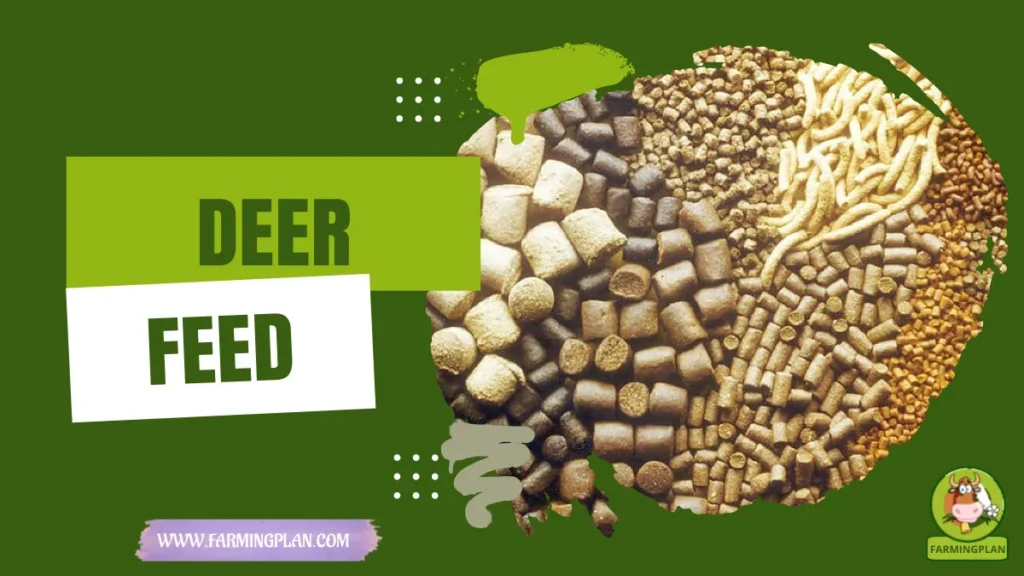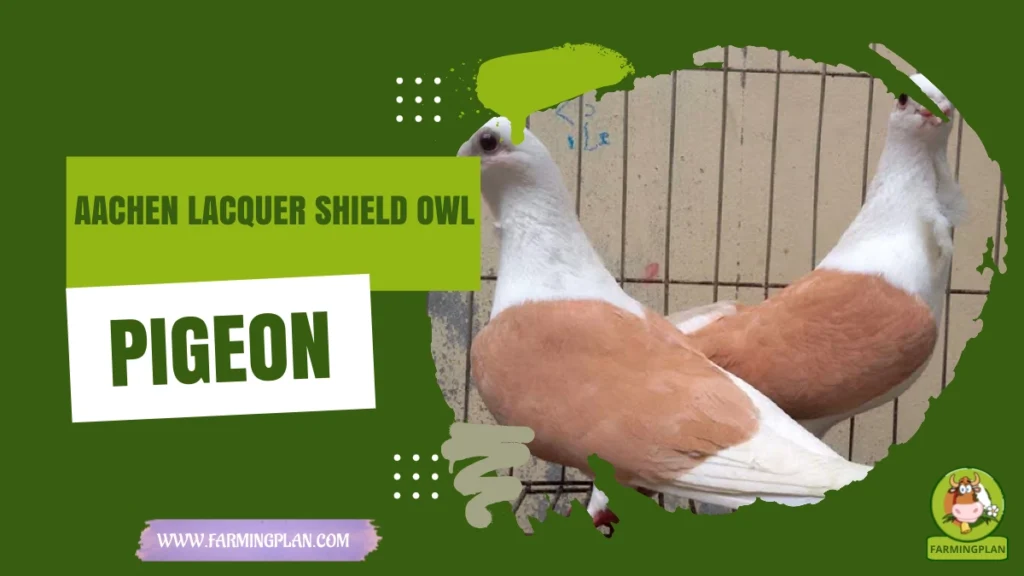The Barak Hound, also known as the Bosnian Coarse-Haired Hound or Illyrian Hound, is an underappreciated gem from Bosnia and Herzegovina. This medium-sized scent hound sports a shaggy gray coat, bushy eyebrows, and a powerful nose perfect for tracking. Hardy and energetic, it thrives in rugged terrain but is just as happy curled up with the family. With its loyal, goofy nature and strong work ethic, the Barak Hound makes an ideal choice for hunters, farmers, and families alike. Whether you’re chasing game or seeking a devoted companion, this rare breed delivers both skill and heart.

History & Origin of Barak Hound Dog
The Barak Hound Dog has deep roots in the Balkan region, specifically in Bosnia and Herzegovina. It’s believed to have developed from indigenous scent hounds, selectively bred over centuries for their toughness and tracking abilities. Locals call it the Bosnian Coarse-Haired Hound – Barak, and it’s also known by a mouthful of names like the Bosnian Rough-coated Hound, Bosnian-Broken-Coated Hound, and even the Herzegovina Barak.
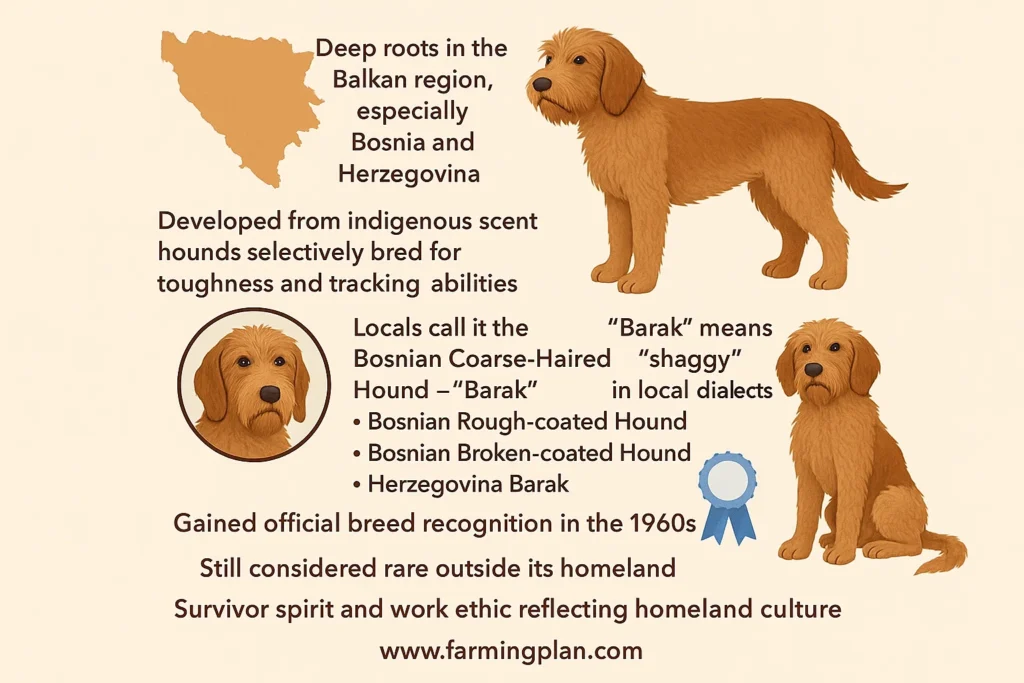
Barak means “shaggy” in local dialects, which perfectly describes their messy coat. During times of war and harsh winters, this breed stayed strong, used mainly for tracking game in mountainous and forested terrain. It gained official breed recognition in the 1960s and is now part of the European scent hound model, though it’s still considered rare outside its homeland. This breed’s survivor spirit and work ethic reflect the culture of its homeland—strong, smart, and reliable through thick and thin.
Read More: Bankhar Dog: Farming A Step-by-Step Guide
Characteristics of Barak Hound Dog
You’ll know a Barak Hound when you see one. This medium-sized dog has a shaggy outer coat that’s usually an earthy grey, sometimes with white markings on the chest or feet. Its face is what really grabs you: bushy eyebrows, a bushy moustache, and soulful eyes.
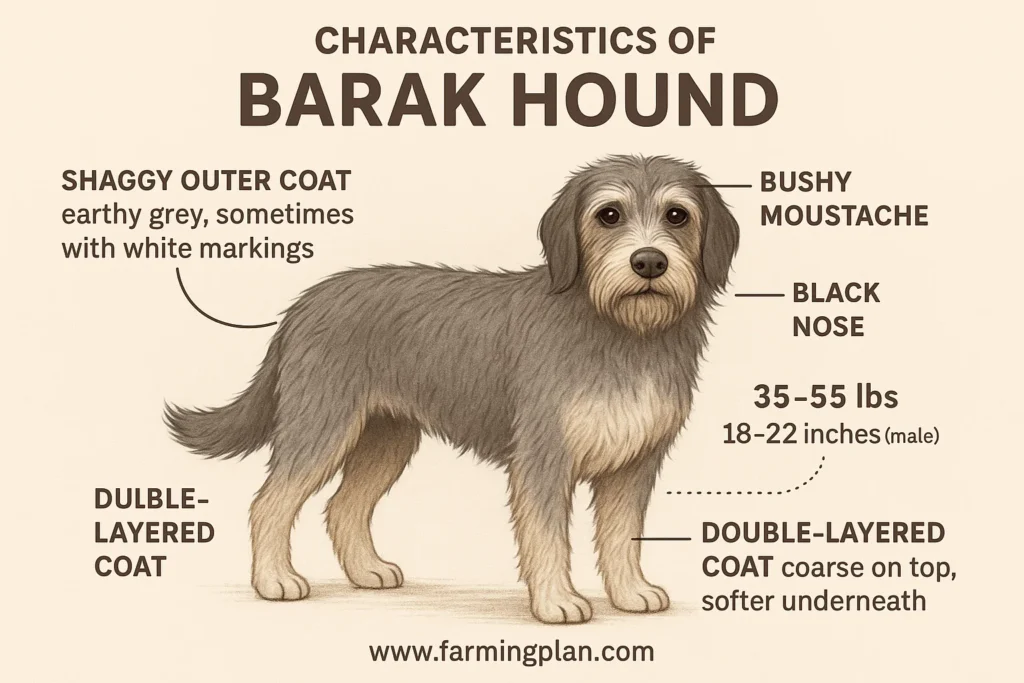
Most adult Baraks weigh around 35–55 pounds, with males standing 18–22 inches tall. Females are just a bit smaller. Their black nose is one of their best tools—absolutely brilliant when following a trail. The coat is double-layered, coarse on top and softer underneath. It’s built to protect them from cold, wet weather—something they dealt with often back in Herzegovina’s challenging conditions. These dogs look a little rough around the edges, but that’s part of their rugged charm.
Read More: Assyrian Mastiff Dog: Guide to Raising
Temperament & Nature of Barak Hound Dog
Don’t let that rugged coat fool you—the Barak Hound Dog is a sweetheart at heart. As a scent hound, it’s intelligent, driven, and sometimes a little stubborn. But with the right training and supplemental play time, this dog blossoms into a loyal companion.
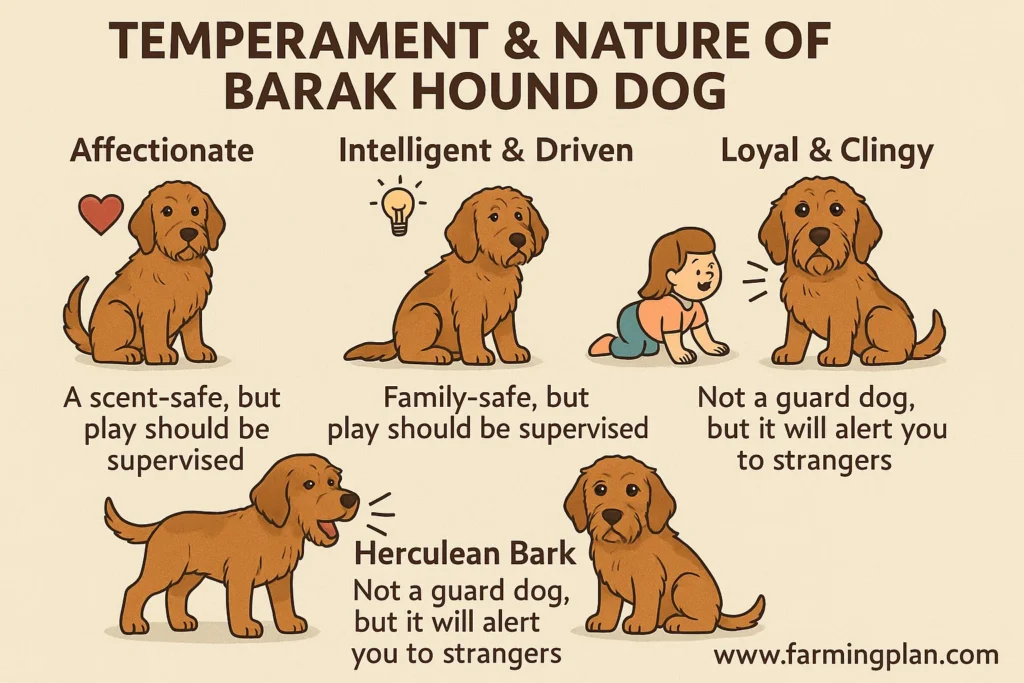
Baraks are family-safe, especially when raised around kids. They can get a little rowdy during play, so supervision is good for little ones. They’re not great guard dogs, but their Herculean bark will still let you know if someone’s coming. They bond deeply with their family and don’t like being left alone too long. If you’re used to independent farm dogs, this one might surprise you—it craves time and connection.
Read More: Zerdava Dog: The Loyal Hunter You’ll Love at Home
Give A Barak Hound Room To Sniff And Time To Bond—You’ll Gain A Hunter And A Heartwarming Friend.
Food & Diet – Feed That Hunter Right
When it comes to feeding a Barak Hound Dog, balance is key. They’re active dogs, so they need high-quality protein-rich food to support their energy and muscle strength.
What I Feed My Barak:
- 2–3 cups of dry dog food per day, split between two meals
- Occasional wet food or cooked meat
- Treats for training (but not too many—they’re smart, not greedy)
Avoid foods high in fillers like corn or soy. And be cautious with human foods—no chocolate, grapes, onions, or anything spicy.
Fresh water is a must, especially after outdoor exercise. You’ll want to keep an eye on their weight and joints, especially as they age.
Usage & Purpose
The Barak Hound was bred for a purpose—to track game in tough terrain. And it still shines in that role. Hunters love its strong nose, endurance, and ability to track wounded animals over long distances.
But they’re not just hunting dogs anymore. These days, you’ll find them as:
- Family pets (especially in active households)
- Show dogs (though still rare)
- Search and rescue workers
- Even in therapy settings thanks to their gentle nature
That said, they do need mental stimulation. If you don’t hunt, consider puzzle toys or scent-based games.
Special Features
Let’s delve into what sets the Barak Hound Dog apart from the rest. Its shaggy coat, excellent nose, adaptability, and rare breed status make it a unique and intriguing addition to any home or kennel.
- Shaggy coat: That coarse outer layer gives them a wild, scruffy charm—and protection in bad weather.
- Excellent nose: One of the most efficient scent hounds in Europe.
- Adaptability: From cold mountains to cozy homes, they adjust well.
- Rare breed: Makes them a unique addition to any home or kennel.
- Bushy features: That moustache and those brows are signature traits.
And let me say this—if you like a dog with personality, this one has it in spades.
Health Issues & Prevention
Like many medium-sized scent hounds, the Barak is generally healthy, but there are a few things to watch out for.
Common Health Concerns:
- Hip Dysplasia: This can lead to pain and stiffness.
- Elbow Dysplasia: Especially if they’re overfed or under-exercised.
- Ear infections: Their floppy ears need regular cleaning.
- Obesity: Too much lounging and not enough trail work.
Prevention Tips:
- Regular vet visits
- Joint supplements like glucosamine
- Balanced diet
- Daily walks or scent games to keep them active
Treat this breed like the athlete it is, and it’ll give you many healthy years in return.
Step-by-Step Pet Owner Care Guide
Step 1: Setting Up The Right Space
Your Barak Hound will need space to roam. A fenced yard is ideal, but if you’re in the city, prepare for long walks or trips to open fields. Indoors, give them a quiet space to relax—think cozy bed and water nearby. Keep things calm, especially early on. They love routine.
Step 2: Socialization & Basic Training
Start young. Introduce them to other dogs, cats, kids, and loud noises. Positive reinforcement works best. They’re sensitive, so avoid yelling. Teach basic commands like sit, stay, and recall. You’ll thank yourself later during hikes or hunts.
Step 3: Grooming That Shaggy Coat
Brush them 2–3 times a week to prevent matting. I use a slicker brush for that coarse topcoat. Check ears weekly for dirt or odor. And don’t forget the occasional bath—maybe once a month or when they’re muddy from the field.
Step 4: Exercise & Enrichment
They need at least 1 hour of active time per day. Walks, scent trails, or even hide-and-seek in the yard. If they’re bored, they’ll get vocal or destructive. Add brain games too—treat puzzles, scent boxes, or hide treats around the house.
Step 5: Vet Visits & Health Care
Schedule annual checkups, update vaccinations, and ask your vet about hip health. I give mine glucosamine chews as a preventive. Keep their weight healthy. I weigh mine monthly to stay on top of it.
Expert Tips & Best Practices
- Early training makes a huge difference—start while they’re pups.
- Don’t skip socialization—these dogs love friends.
- Use scent-based toys—they need to sniff to be happy.
- Brush that coat! It’s part of their charm, but it tangles easily.
- Rotate their activities—variety keeps them mentally sharp.
Tip: Tire Their Nose, Not Their Legs—Baraks Are Scent Dogs First, Runners Second.
FAQ
How much does a Barak Hound Dog cost?
A Barak Hound Dog puppy can range from $600 to $1200, depending on pedigree and breeder reputation.
Is the Barak Hound good with kids and families?
Yes! They’re loyal, gentle, and playful, making them great for active families.
Where can I find a Barak Hound Dog for sale near me?
Because they’re rare, start with breed-specific registries or international breeders specializing in Bulgarian or Bosnian dog breeds.
What is the lifespan of a Barak Hound Dog?
They typically live 12–14 years, especially with good diet and exercise.
Are Barak Hounds easy to train?
They’re smart but a bit independent. With positive reinforcement, they learn quickly—especially scent work.
Conclusion
There’s something special about the Barak Hound Dog. From their shaggy coat and expressive eyes to their unmatched tracking skills and friendly personality, they’re a rare breed with a lot to offer. Whether you’re a hunter needing a rugged trail partner or a pet lover looking for a loyal and unique companion, this hound checks all the boxes. With proper care, training, and a little love, the Barak will be your best buddy for years to come. If you’re ready for a dog with spirit, smarts, and a shaggy beard to boot—go meet a Barak. You won’t regret it.

